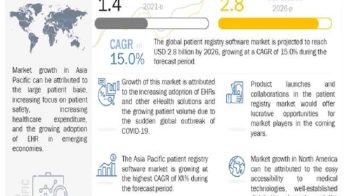Laboratory Informatics Latest Technology
Laboratory informatics is the application of information technology and computer science to the management of laboratory data, processes, and operations. As the laboratory environment evolves and scientific data becomes more complex, laboratory informatics provides solutions to help manage, store, and analyze the data. Examples of the latest technology in the field of laboratory informatics include:
1. Cloud-based Laboratory Information Management Systems (LIMS): Cloud-based LIMS are designed to help store, manage, and analyze laboratory data. They provide cloud-based storage solutions and automated processes to help streamline laboratory operations.
2. Artificial Intelligence-Based Data Analysis: Artificial intelligence (AI) is increasingly being applied to laboratory data analysis. AI-based algorithms can be used to identify patterns, detect anomalies, and make predictions from laboratory data.
3. Automated Laboratory Devices: Automated laboratory devices are designed to automate certain laboratory processes, such as sample preparation and data collection. They can help increase accuracy and reduce the time required to complete experiments.
4. Electronic Laboratory Notebooks (ELNs): ELNs are used to store and organize scientific data and notes. They are designed to help reduce errors and improve data accuracy.
5. Mobile Apps for Laboratory Data Analysis: Mobile apps are increasingly being used to analyze laboratory data. These apps are designed to help scientists quickly and easily analyze data on the go.
6. Digital Pathology Solutions: Digital pathology solutions are designed to help manage and analyze pathology data. They can help improve the accuracy and speed of diagnosis and treatment.
Thermo fisher LIMS
Thermo Fisher Scientific LIMS (Laboratory Information Management System) is a comprehensive software solution designed to automate and streamline laboratory processes. It is a web-based, highly configurable system that provides a centralized platform for managing, organizing, and analyzing data from various laboratory operations. It allows users to track samples, collect and store results, review data, generate reports, and more. With its intuitive user interface, powerful features, and comprehensive support, Thermo Fisher LIMS helps laboratories to maximize efficiency, accuracy, and compliance.
LabVantage Solutions LIMS
LabVantage Solutions LIMS is a comprehensive laboratory information management system (LIMS) designed to help laboratories with their operations, including automating processes, managing data, and generating reports. The software is designed to be highly customizable, so it can be tailored to meet the exact needs of each laboratory. It is also designed to be easy to use, with a simple and intuitive user interface. LabVantage Solutions LIMS provides features such as data management, sample tracking, instrument integration, and reporting. It can also be integrated with other systems, such as enterprise resource planning (ERP) systems, to further streamline the laboratory’s operations. LabVantage Solutions LIMS is used by a variety of industries, including pharmaceuticals, biotechnology, medical research, and environmental monitoring.
In June 2020, LabWare introduced the latest version of its LIMS—LabWare 8. The LabWare 8 solution is the company’s enterprises laboratory platform (ELP) that delivers the capabilities of both LIMS and ELN in a single integrated system.
The prominent players in the market are Thermo Fisher Scientific Inc. (US), LabVantage Solutions, Inc. (US), LabWare (US), Abbott Informatics (US), LabLynx, Inc. (US), Waters (US), Agilent Technologies, Inc. (US), Autoscribe Informatics (US), Dassault Systèmes (Paris, France), LABWORKS LLC (US), and PerkinElmer Inc. (US). The global laboratory informatics market is poised to reach $5.6 billion by 2026, growing at a CAGR of 10.8% from 2021 to 2026. Organizations are beginning to recognize the importance of streamlining and automating their laboratory processes in order to improve efficiency and reduce costs. Additionally, the development of new technologies, such as cloud computing, big data, and analytics, are allowing organizations to leverage the advantages of laboratory informatics to make more informed decisions. Finally, the increasing demand for diagnostics and personalized medicine is driving the need for more advanced informatics solutions.
Related Links

